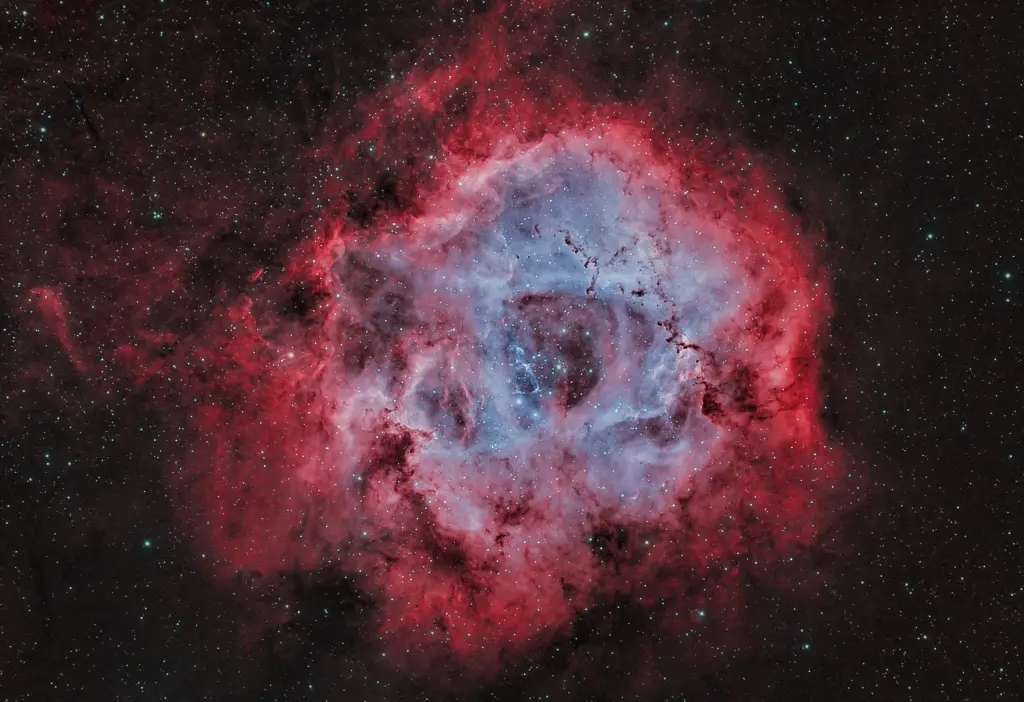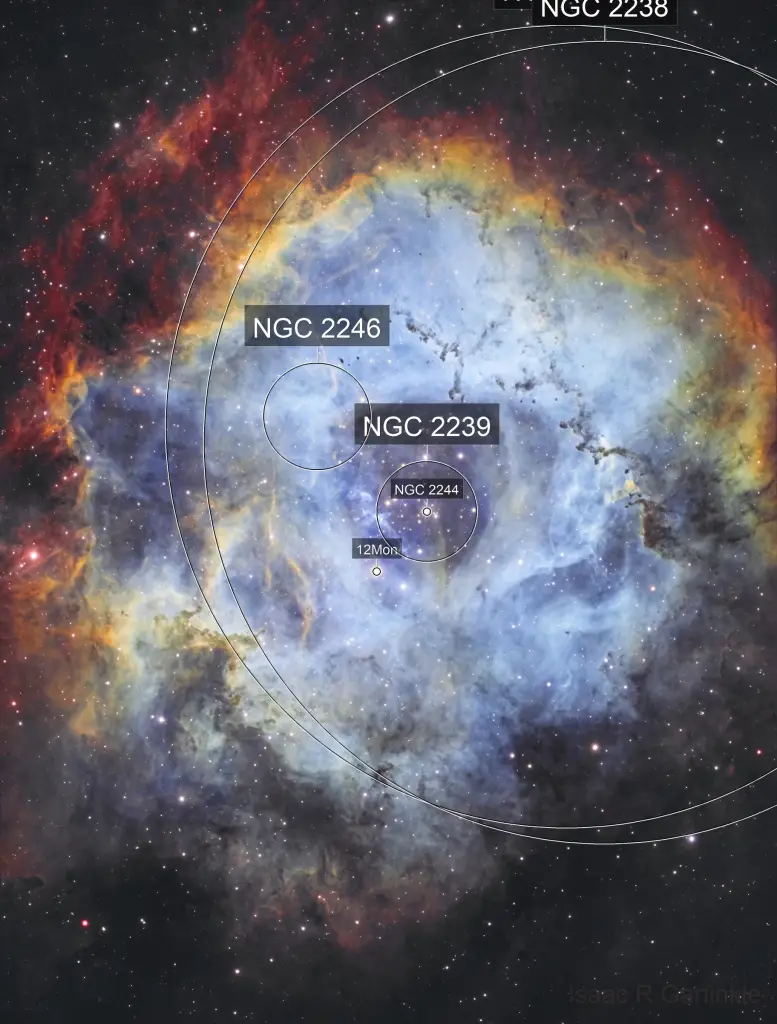Key Takeaways
- NGC 246, known as the Skull Nebula, is a planetary nebula situated in the Cetus constellation with a unique hierarchical triple star system at its center.
- Discovered by William Herschel in 1785, the nebula’s central star, a white dwarf named HIP 3678 A, stands at the heart of this celestial phenomenon.
- Roughly 1,600 light-years away, NGC 246 captivates amateur astronomers, often referred to as the “Pac-Man Nebula,” due to its distinctive central star arrangement amid the surrounding star field.
- A new layer of understanding emerged in 2014 when astronomers identified a second companion star, a red dwarf called HIP 3678 C, revolving around HIP 3678 A using the European Southern Observatory’s Very Large Telescope.
- NGC 246 shouldn’t be confused with the Rosette Nebula, occasionally called the “Skull” as well, underlining the uniqueness of this intriguing cosmic entity.
Gazing at the night sky, our eyes often alight upon celestial wonders that both captivate and puzzle. Among these, the NGC 246, also renowned as the Skull Nebula, takes its place. Situated in the constellation Cetus, this planetary nebula possesses an unparalleled feature – a hierarchical triple star system reigning at its core. The year 1785 marked its discovery, credited to the eminent astronomer William Herschel, whose observant eye unveiled the enigmatic beauty of NGC 246.
At a distance of approximately 1,600 light-years, the luminous heart of NGC 246 is graced by the presence of a 12th magnitude white dwarf, affectionately named HIP 3678 A. However, the intrigue doesn’t stop here. The nebula has earned the moniker “Pac-Man Nebula” in the amateur astronomy circles due to the artful arrangement of its central stars amidst the surrounding starry expanse.
In a fascinating twist of cosmic fate, astronomers added a new chapter to NGC 246’s narrative in 2014. Within the embrace of this celestial wonder, they uncovered a secondary companion star. This red dwarf, christened HIP 3678 C, dances around the central white dwarf HIP 3678 A, unveiling a hidden cosmic ballet. This revelation, made possible by the precision of the European Southern Observatory’s Very Large Telescope, adds a new layer of awe to the already mesmerizing NGC 246.
In the vast canvas of the cosmos, NGC 246 stands as a testament to the endless marvels that await our discovery. And as the “Skull Nebula” echoes in both the annals of astronomy and the whispers of stargazers, its unique radiance continues to kindle our curiosity.
#1

Credit: Massimo Di Fusco
#2

Credit: Isaac Garfinkle
#3

Credit: NASA, ESA, Hubble
#4

by Mike Jolley
#5

By Andrei Gusan
#8

By Alex Roig
#9

#10



